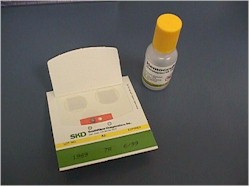

To lower the risk, use the lowest absorbency rating possible to suit your menstrual flow. As well as absorbing menstrual blood, tampons can also absorb the vagina’s natural lubricant and bacteria, increasing the risk of TSS, a rare but potentially fatal condition. But as with most pads, because they are disposable and non-biodegradable, tampons are not the most environmentally sound or cost-effective option.Īnother consideration is Toxic Shock Syndrome (TSS).

Plus, they can generally feel more comfortable when compared to sitting on a pad, which if left on too long can get messy. Many users like tampons because they are more discreet than pads, both in terms of the smaller packaging and while they are being used (i.e. Tampons work by absorbing menstrual blood internally (though leaks are not uncommon, so an additional pantiliner may be required), and can be left in for about four hours, at which point they are removed by pulling gently on the string. This can take practice, and not everyone finds them comfortable to use. Similar in terms of the materials it is made of, they differ in that a tampon is used internally by insertion into the vaginal canal. In terms of popular use, the tampon is a close second to the sanitary pad. These can be reused multiple times, which is both more environmentally-friendly and cost-effective. The good news is that there are now washable sanitary pads available in many countries. This can also mean the lifetime cost of a pack or two of pads every month really adds up. However, due to their disposable nature they’re not the most environmentally-friendly option, as they must be changed roughly every four hours to prevent bacteria growth and odor. Over the decades the design of pads has evolved to become much more absorbent and comfortable, with a wide range available to suit different flows. They are attached to the inside of the user’s underwear, and work by absorbing menstrual blood through layers of absorbent material – usually rayon, cotton and plastic. Probably the most commonly used period product, the sanitary pad/napkin has been around commercially for over a century. Allow us to show you some of the main options available. This is especially true nowadays given that the landscape of period products has changed dramatically in recent years, and concerns around sustainability are (rightfully) ever-increasing. With this totalling about 450 periods in a lifetime, it’s always a good idea to be thinking about the products used to manage your periods. Once a month, most people aged between around 13 and 50, and who have a uterus, will experience a period – the 3-7 day window where blood from the uterus is released through the vagina.


 0 kommentar(er)
0 kommentar(er)
